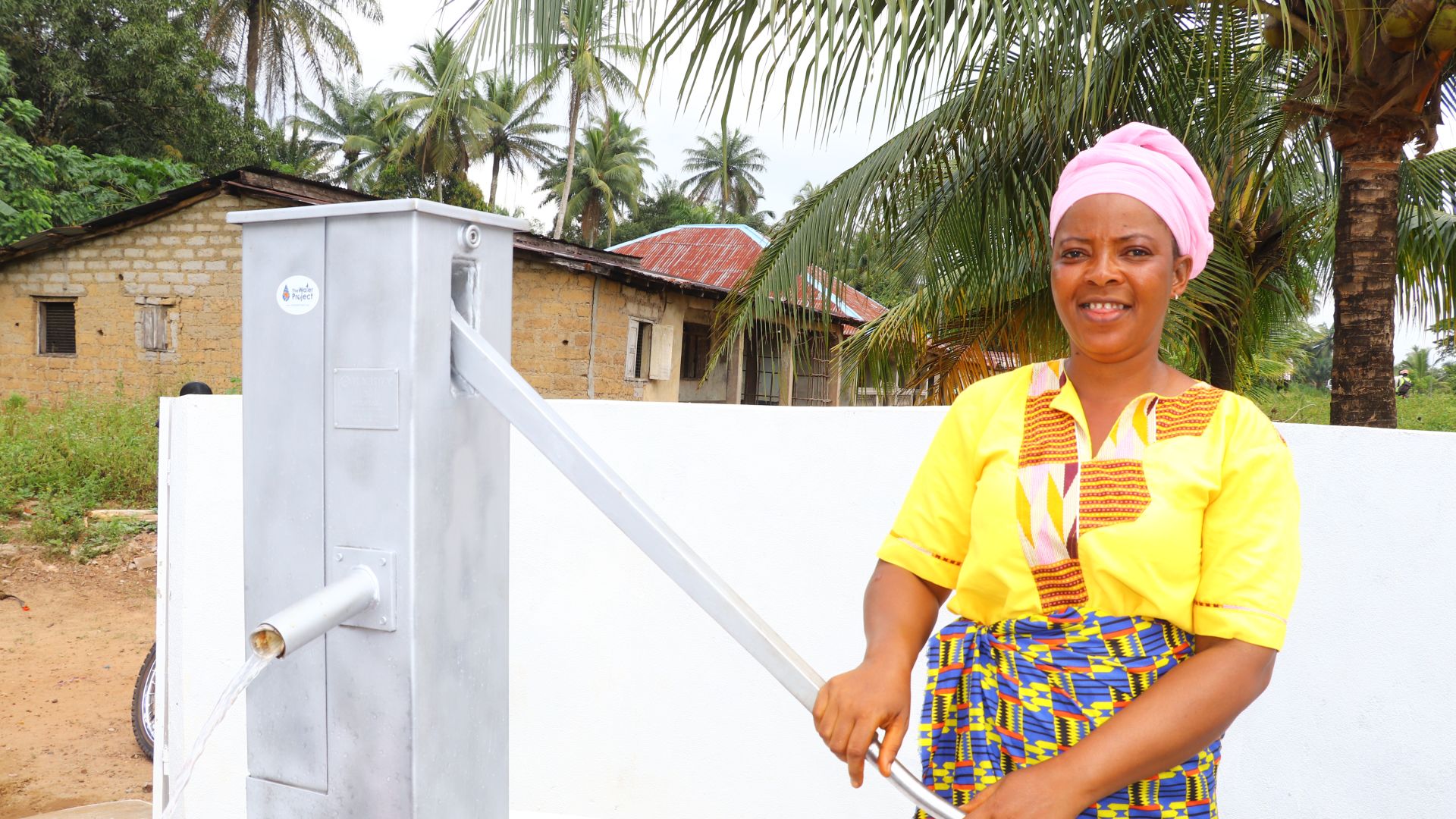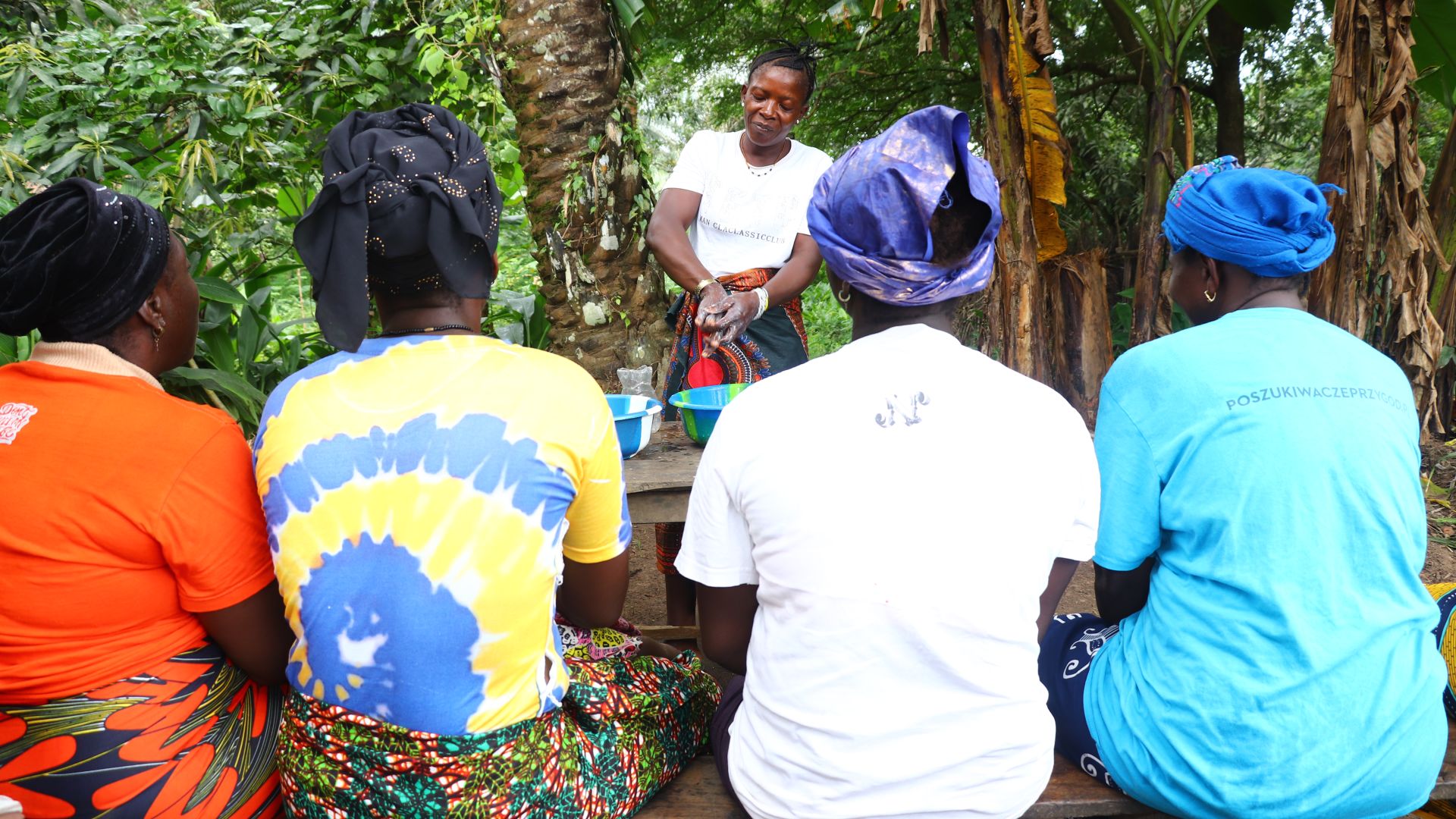The community of Bundulai, comprising of 423 individuals, faces the daunting challenge of accessing adequate water. The community's primary water source, a well, is often overcrowded and dries up during the dry season, leaving the residents with no choice but to collect water from a nearby stream. However, the water from the stream is contaminated and unfit for human consumption, putting the health and well-being of the community members at risk.
30-year-old trader Adamsay Sesay, pictured below, said, "It is difficult for me to fetch water for domestic use at my house. The well in this community cannot provide water throughout the year. Every one of us in this community depends on this well at that moment. It becomes hard for me to fetch water because of overcrowding and the water shortage. "

"I fetch water from the stream (seen below) when the water well gets overcrowded or dried. This becomes a challenging task for me because it is hard to access the stream. The stream water is only clean in the morning or mid-day when there are fewer people in the town. The stream water would be filthy in the evening when people had gone to launder, bathe, and fetch water. It would be hard for me to fetch clean water from the stream. I will soon start struggling to fetch clean water from the stream after December when everyone in this community is receiving visitors," she added.
The water at the stream is never truly “clean,” but community members refer to it as such when there is not a lot of obvious sediment that causes them the extra work of filtering it or letting it sit and settle. The water from the stream is contaminated. People stand in it, launder their clothes, and bathe there.

If children have to journey to collect water, they often sacrifice crucial learning time and risk their safety. When they collect at the stream, they also fear animal attacks.
"I fetch water from the well along the highway every morning before and after I return home from school. The well is near my house, but sometimes it would be hard for me to fetch water quickly because of the overcrowding at the well," shared 12-year-old Santigie B., pictured below.

"I also fetch water from the stream when it is difficult for me to fetch water from the well and my mother is waiting for water to cook. It is also not easy for me to fetch water from the stream because it would be filthy. I need enough water to launder my school uniforms after school, but I must carry them to the stream for laundering when there is not enough water at my house. I [am] afraid of snakes when going to the stream to either fetch water or launder my clothes. That is why I would go with my friends to the stream," he continued.

The well's rehabilitation will enable people like Adamsay to collect water efficiently. When a well is rehabilitated, we drill down deeper, allowing a more reliable flow of water. Children like Santigie will no longer resort to fetching from the stream, consuming all their time. With a reliable water source, people, young and old, can focus on life-improving tasks, hopefully with time left to rest.
Note: Our proposed water point can only serve 300 people per day. We hope to continue working with this community to identify other water solutions that will ensure all of the people in this community have access to safe and reliable drinking water.
The Proposed Solution, Determined Together...
At The Water Project, everyone has a part in conversations and solutions. We operate in transparency, believing it benefits everyone. We expect reliability from one another as well as our water solutions. Everyone involved makes this possible through hard work and dedication.
In a joint discovery process, community members determine their most advantageous water solution alongside our technical experts. Read more specifics about this solution on the What We're Building tab of this project page. Then, community members lend their support by collecting needed construction materials (sometimes for months ahead of time!), providing labor alongside our artisans, sheltering and feeding the builders, and supplying additional resources.
Water Access for Everyone
This water project is one piece in a large puzzle. In Kenya, Sierra Leone, and Uganda, we're working toward complete coverage of reliable, maintained water sources that guarantee public access now and in the future within a 30-minute round trip for each community, household, school, and health center. One day, we hope to report that this has been achieved!
Training on Health, Hygiene & More
With the community's input, we've identified topics where training will increase positive health outcomes at personal, household, and community levels. We'll coordinate with them to find the best training date. Some examples of what we train communities on are:
- Improved hygiene, health, and sanitation habits
- Safe water handling, storage & treatment
- Disease prevention and proper handwashing
- Income-generation
- Community leadership, governance, & election of a water committee
- Operation and maintenance of the water point

 Borehole Well and Hand Pump
Borehole Well and Hand Pump


























